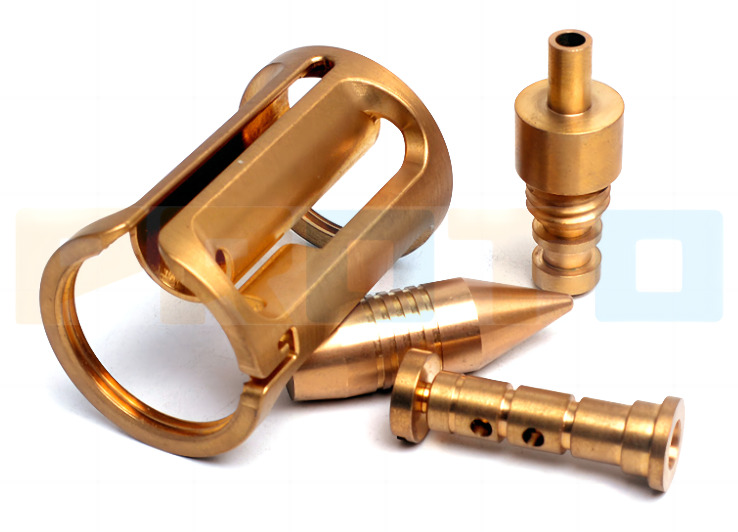Brass grades are divided into several categories based on zinc, copper, lead and iron content. The proportions of these contents vary in terms of physical and mechanical properties, making them suitable for a wide range of applications. Among the various types, divided into four grades, C-360, C-260 and C-280, and C-646, it is the most commonly used brass in CNC manufacturing.

Types of brass grades commonly used in CNC machining
C-360
It is the best type among other brasses due to its superior machinability and strength. Zinc (about 35%), lead and iron (about 3%) and the remaining copper make up the composition of C 360-brass. Most of its applications are automatic screws, musical instruments, hardware and medical equipment parts. However, it also has some disadvantages due to the lead content. For example, it occasionally develops a crackled surface finish and is sensitive to acids.
C-260
This extra zinc-copper formula contains small amounts of lead and iron. Zinc contains about 20% lead and 1% iron. Because of its historical use in cartridges, manufacturers also commonly refer to it as cartridge brass. This brass has good thermal conductivity, corrosion resistance, and tensile strength, making it suitable for many applications, including electrical sockets, costume jewelry, buttons, pressure delivery systems, and watch parts.
C-280
It is a strong brass grade originally developed for use in boat hull linings. The ratio of copper to zinc in its structure is 3:2. Due to its high strength and excellent corrosion resistance, it is very effective for manufacturing ship and building components.
C-464
This brass is specifically used in the production of naval ship parts in high humidity environments. Its unique composition provides exceptional corrosion resistance and high strength. It contains 59% copper, 40% zinc, 1% tin and very little tin. Of course, being powerful makes CNC machining more challenging, but we have the professional tools and expert engineers to make it perfect.
Advantage
1.Easy to process
Brass is one of the easiest alloys to CNC machine. The C-360 has a 100% cutting rate. Because brass can be machined at high speeds and increases the rate of material that can be removed, its excellent machining properties can significantly reduce machining times. Typically, using brass rods as workpieces will not damage the machining tools when using CNC machines.
2.Diverse attributes
Brass comes in different grades with different properties, including hardness, elasticity and strength. The desired properties can be easily achieved by mixing different amounts of copper, zinc, lead and iron. Therefore, choosing the right brass grade for the part to be manufactured is simple.
3.Precision machining
Brass has properties that contribute to the dimensional stability of CNC machined parts, including a low coefficient of distortion, high machinability and excellent impact resistance.
Therefore, brass CNC machining is an effective method for manufacturing products that require tight tolerances.
4.Safe processing
Unlike other materials such as plastic, brass does not produce toxic by-products during CNC machining. Therefore, it is a non-sparking material and therefore completely safe to process.
5.Compatible with machining tools
The first choice for CNC machining of brass parts is rod workpieces. However, brass is compatible with all types of tools, whether cutting, milling, turning, drilling or any other operation required for production. This property of brass facilitates friction-free machining and improves machining efficiency.
6.Recyclability
Brass CNC machined products and components are fully recyclable. Therefore, when the product’s life cycle is complete, brass can be reused after recycling. Another great feature is the ability to separate zinc and copper for reuse.
7.Suitable for high humidity and high temperature
Because they do not melt quickly at high temperatures (withstanding at least 800 C), CNC machining produces parts that can withstand thermal challenges, making them ideal for applications where temperature challenges functionality. Additionally, they resist rusting in high humidity conditions without losing their properties.
8.Aesthetic advantages
Brass gleams and comes in many colors, from red to yellow. This is because the zinc content determines the color. Therefore, no additional coating is required compared to other materials such as steel and plastic.
PROTO MFG provides a wide range of manufacturing capabilities and other value-added services for all of your prototyping and production needs. Visit our website to learn more or to request a free, no-obligation quote.